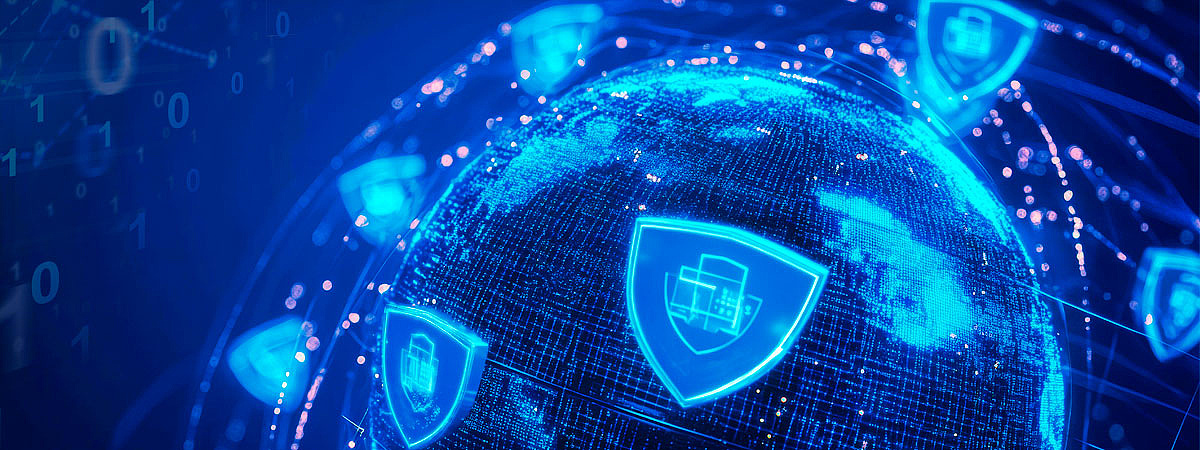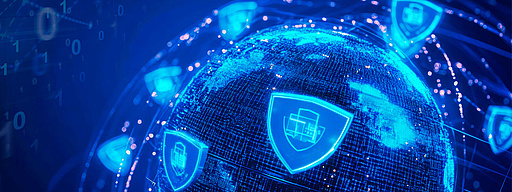
Cyber resilience: the most important trends for secure endpoint management
The digital landscape is evolving rapidly, and so are the threats that companies face. That makes it essential for IT administrators to make their systems as resilient as possible. Cyber resilience - the ability to fend off attacks, recover quickly from incidents and maintain continuous operations - is increasingly important, especially in endpoint management.
Short & sweet
- Zero trust and AI-supported security solutions are becoming fundamental elements of modern endpoint management.
- Automation and integration of security measures are the keys to mastering increasing complexity.
- Compliance, data protection and resilient backup strategies are increasingly important for establishing and maintaining a strong and resilient cybersecurity posture.
Zero trust as the cornerstone of cyber resilience
In recent years, the zero trust model has evolved into an indispensable necessity. The principle of "Never trust, always verify" no longer only applies to network access, but also to endpoint management overall. IT administrators must ensure that:
- Every end device is continuously checked for trustworthiness;
- Access rights are assigned granularly and dynamically;
- Automated authentication processes are implemented, and;
- Behavior-based analyses are used to detect anomalies.
But what other developments are shaping the market going forward? What will be crucial for cyber resilience in the near future?
AI-supported security solutions
AI is certainly the topic of the hour and one that will have a lasting impact on the entire
industry. While the dangers of AI-generated attacks are often discussed, the technology also will generate numerous innovations that will make IT administrators' work
easier.
AI-based systems may soon be able to detect and rectify endpoint vulnerabilities automatically before they can be exploited. Machine learning also could enable
early anomaly detection by identifying unusual activities and proactively preventing potential attacks. This will significantly reduce IT teams’ cybersecurity
workloads and shorten the mean time to respond/remediate/repair, or MTTR.
Remote work security and automation
Many companies still have some catching up to do when it comes to securing endpoints outside the corporate network. The hybrid working world is here to stay for the foreseeable future and
requires robust security concepts and a high degree of automation to strengthen cyber resilience.
IT teams need to focus on securing remote endpoints as well as they
do local devices. In addition to AI tools, this includes increased measures for Endpoint Detection and Response (EDR) and Network Access Control
(NAC). Replacing manual processes with automated workflows also enables faster responses to security incidents while further increasing IT efficiency.
Remote compliance and data protection
With the expected adoption of NIS2 requirements in the EU, stricter compliance rules are coming into play. Enforcement of data protection and cyber security rules – with serious consequences for non-compliance – makes automated monitoring, documentation and reporting even more important. IT admins need to implement tools sooner rather than later to:
- Automatically generate compliance reports;
- Ensure compliant configurations;
- Proactively prevent data breaches, and;
- Create audit trails for all relevant activities.
Resilient backup strategies
In addition to preventive security measures, a holistic cyber resilience strategy is essential. That includes adopting modern backup strategies and secure backup solutions that not only protect data, but also ensure that it can be restored quickly in the event of a crisis. Attackers are constantly developing new tactics to compromise endpoints and encrypt data using ransomware. A multi-layered approach is required to minimize those threats with measures including:
- Regular and offline backups;
- EDR solutions for rapid detection and containment of attacks, and;
- Targeted employee awareness training to reduce human error and phishing attacks.
In addition, IT administrators must ensure that their security solutions can effectively detect and block both known and unknown ransomware variants.
Conclusion: cyber resilience requires smart solutions
Current cyber resilience trends highlight the growing complexity of effective endpoint management. With powerful solutions such as the baramundi Management Suite, IT teams can strengthen their cyber resilience, minimize security risks and focus on providing a secure and efficient IT infrastructure.
Fast and secure through automation
Cyber attacks are becoming more sophisticated and manual defenses are reaching their limits. Automation helps IT teams react faster, minimize threats and make endpoint management more
efficient. But what’s the best way to implement it? Find out in our free white paper.
Download the free white paper
Read more
Cyber resilience: the most important trends for secure endpoint management
The ingenious principle of Linux software management
- Tags:
- uem,
- bms,
- linux,
- managed software


